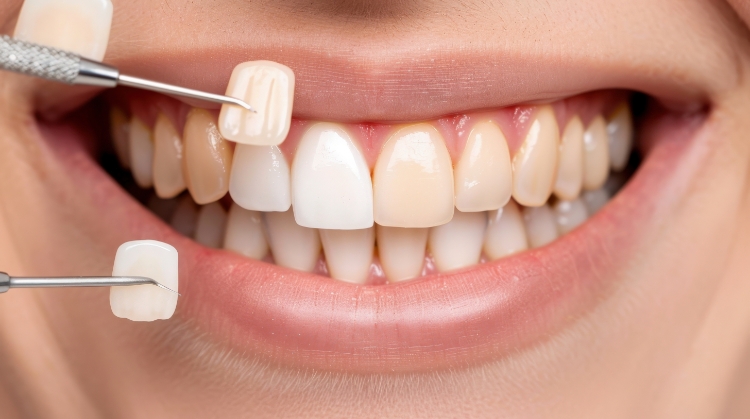If you’re looking to enhance your smile in Portland, OR, you’ve likely come across two popular cosmetic dentistry options: veneers and bonding. Both can dramatically improve the appearance of your teeth, but they serve different purposes and come with their own advantages. In this guide, we’ll break down the key differences between veneers and bonding, helping you decide which is the best choice for your smile makeover.
What Are Veneers?
Veneers are thin, custom-made shells that cover the front surface of your teeth. They are typically made from porcelain or composite resin, and they are permanently bonded to your teeth to create a flawless appearance.
Pros of Veneers
- Long-Lasting – Porcelain veneers can last 10-15 years or more with proper care.
- Stain-Resistant – Unlike natural teeth, veneers are resistant to stains from coffee, tea, and wine.
- Natural Look – Porcelain mimics the translucency of real teeth for a more natural appearance.
- Corrects Multiple Issues – Veneers can address discoloration, gaps, misalignment, and chipped teeth.
Cons of Veneers
- Irreversible Procedure – A thin layer of enamel must be removed for veneers to fit properly.
- Higher Cost – Veneers tend to be more expensive than bonding due to their durability and quality.
- Not for Severe Damage – If your teeth are significantly damaged or decayed, other treatments may be required.
What Is Dental Bonding?
Dental bonding is a minimally invasive procedure where a tooth-colored composite resin is applied to your teeth to correct chips, cracks, gaps, or discoloration. Unlike veneers, bonding doesn’t require significant enamel removal and can often be done in a single visit.
Pros of Dental Bonding
- Affordable – Bonding is less expensive than veneers, making it a budget-friendly option.
- Quick Procedure – Most bonding treatments can be completed in just one visit to the dentist.
- Reversible – Unlike veneers, bonding doesn’t require permanent enamel removal.
Cons of Dental Bonding
- Less Durable – Bonding material is not as strong as porcelain and may need touch-ups or replacement after 5-7 years.
- More Prone to Stains – Composite resin can stain over time, especially with coffee, tea, and smoking.
- Not Ideal for Major Corrections – If you need significant cosmetic changes, veneers may be a better option.
- Bleaching – Bonding does not bleach. Bondings tend to stand out after bleaching has been completed.
Which Option Is Best for You?
Choosing between veneers and bonding depends on your specific dental needs, budget, and long-term goals. Here’s a quick guide to help you decide:
Choose Veneers if: You want a long-lasting, highly aesthetic smile transformation and are willing to invest in a permanent solution.
Choose Bonding if: You need a quick and budget-friendly fix for minor cosmetic issues.
For personalized advice, On Q Dentistry in Portland, OR, can assess your smile and recommend the best treatment plan tailored to your needs.
Enhance Your Smile with On Q Dentistry in Portland, OR
If you’re considering a smile makeover, trust On Q Dentistry to provide expert care and stunning results. Whether you choose veneers or bonding, her team will ensure you achieve a smile that boosts your confidence and enhances your natural beauty.
Don’t wait to get the smile you deserve. Call On Q Dentistry today or visit our office in Portland, OR, to book your consultation!
